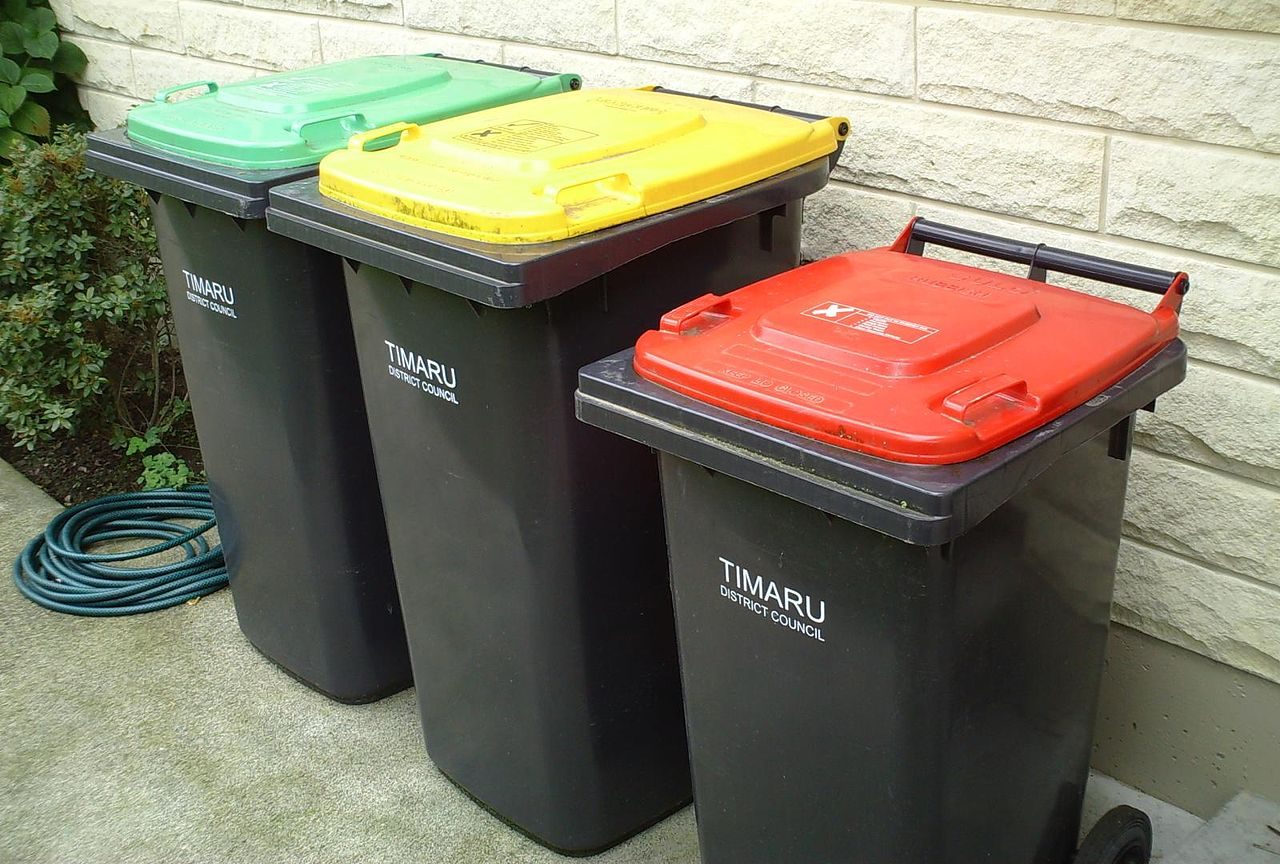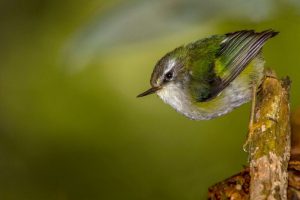Nature’s Voice: Why Recycle Rubbish?
While local authorities are responsible for waste disposal, it is our waste that needs dealing with, so we all have an important role to play. Avoiding more waste has to be the first principle, the very least we can do is reduce waste and help make the environment more sustainable.
According to the Timaru District Council, around 1000 tonnes of food scraps are going into the landfill each year. This not only unnecessarily fills up the current site and thus shorten its life, it also produces large amounts of methane gas through lack of oxygen when rubbish is buried. Methane contributes to the serious negative impacts of climate change and global warming.

Three bins from Timaru District Council. Green for green waste, yellow for recycling and red for general waste. (Photo: Wikimedia Commons)
The three bin system in the district, green for green waste, yellow for recycling and red for waste, is a simple and practical system. Not sorting your waste makes the process for the Council much more difficult, more costly, and less effective. A little bit more effort could go a long way. We have to pay for it through rates, so why not avoid these expensive mistakes in the first place? In addition compost is being made and sold from your green waste, it becomes a valuable resource.
The government introduced the Waste Minimisation Act in 2008, to encourage a reduction in the amount of waste we generate and dispose of. The aim is to reduce the environmental harm of waste and provide economic, social and cultural benefits for New Zealand.
The Act encourages a recycling economy, which means looking beyond the current “take, make and dispose” extractive industrial model. It encourages: replacing toxic, single use or non-recyclable resources; new technologies that promote or support the recovery and reuse of resources; innovative products that avoid waste, or use, and add value to waste; new services to take resources out of the waste stream and put them back into circulation; local infrastructure to support domestic recycling and community engagement.
Waste minimisation is one of the focuses of the Timaru District Council’s 10 year plan, which people had a chance to submit on recently.
Ines Stäger is a landscape architect based in Geraldine, a board member of the Royal Forest & Bird Protection Society and a committee member of the local branch.



